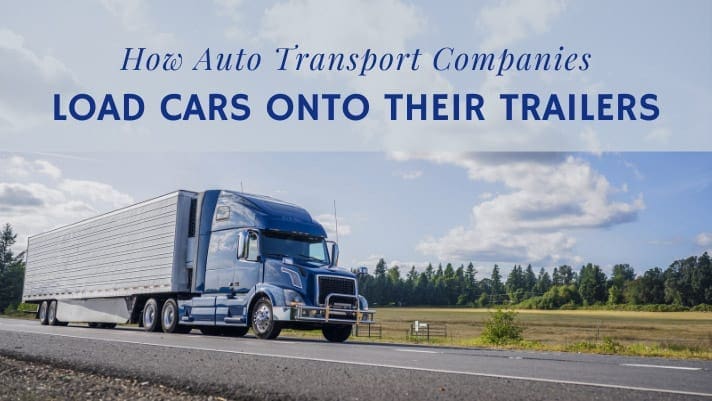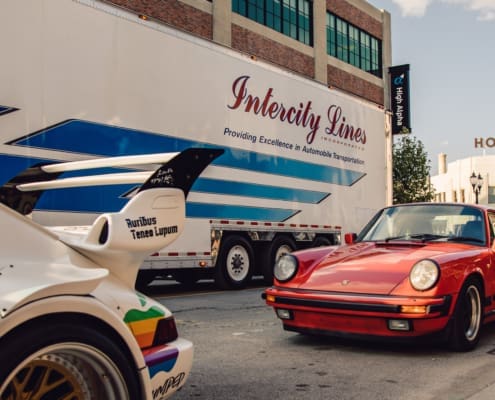How Auto Transport Companies Load Cars Onto Their Trailers
Loading expensive exotic cars onto a trailer takes patience, care, and skill. The goal of Intercity Lines is to get your car from point A to point B without a scratch on it. We treat your car like it’s ours; we handle it with the utmost care and respect. Other classic car transport carriers may proclaim they do the same, but you can trust that we mean what we say. Your car is important to you and to us. Learn how auto transport companies load cars onto their trailers, so you know your car will be safe in their hands.
There are two ways to get a car onto a trailer. A company will use either with ramps or hydraulic lifts. Those two methods have major differences that can affect the condition of your car. Some carriers prefer using car hauling ramps because they’re cheaper than hydraulic lift gates. That might decrease the cost of shipping your car in the short term, but there are dangers associated with ramps. Ramps pose a risk to vehicles that sit low to the ground. The possibility of scraping the underside of the car increases during loading due to the ramps steep incline. Some loaders use blocks of wood in addition to the ramps to cut the incline. The blocks can shoot up, after the car rolls off them, and hit the car.
Hydraulic lift gates, like the ones equipped on Intercity Lines enclosed trailers, are the safest way to load a vehicle. They’re literally an elevator for the car during loading and unloading. They lower completely to the ground, so low clearance vehicles can drive on to the ramp without the risk of scraping the undercarriage. They also give the driver much more control over the car. Instead of the driver having to drive up two thin ramps, he can slowly drive on and off the liftgate. There are no inclines that require aggressive acceleration or excessive brake control. Burning up a clutch happens when loading cars on ramps, so lift gates are the best option.
When securing your car, Intercity Lines will only use nylon wheel tie downs, never chains. Nylon tie downs are the only way to secure a classic car for transport because they won’t damage the car. The straps go over the tire and never meet the frame or chassis. Chains get attached to holes underneath the vehicle, on the frame, and then onto the trailer. Putting chains on too tight could bend the frame, which could result in thousands of dollars of damage. By attaching chains to the wrong place underneath the car, they could slip out and allow the car to roll in transit or possibly scratch the paint. Attaching to the wrong spot can also bend the frame and chassis.






